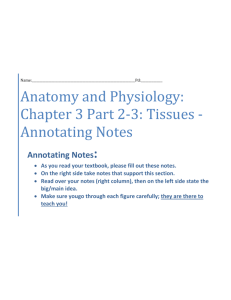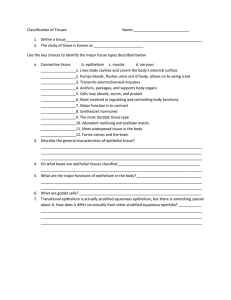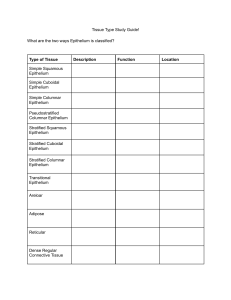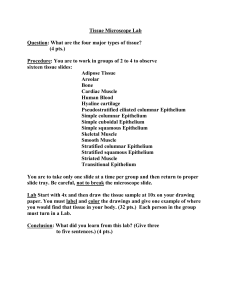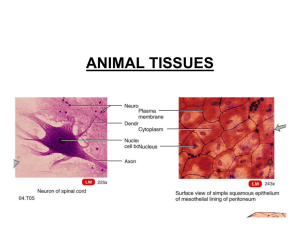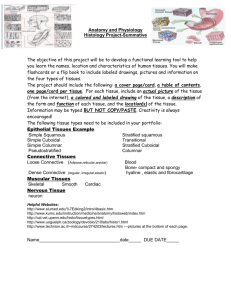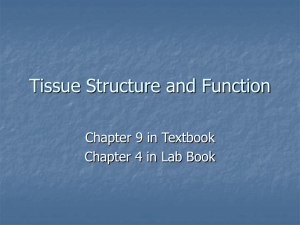Section 2 outline - My Teacher Pages
advertisement
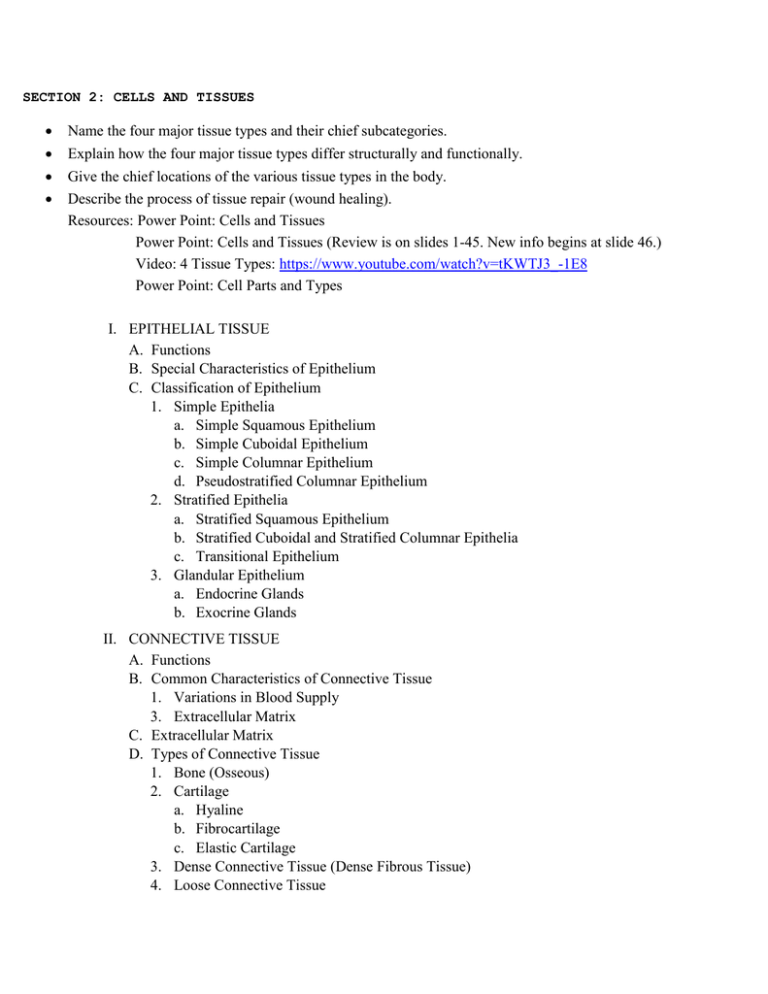
SECTION 2: CELLS AND TISSUES Name the four major tissue types and their chief subcategories. Explain how the four major tissue types differ structurally and functionally. Give the chief locations of the various tissue types in the body. Describe the process of tissue repair (wound healing). Resources: Power Point: Cells and Tissues Power Point: Cells and Tissues (Review is on slides 1-45. New info begins at slide 46.) Video: 4 Tissue Types: https://www.youtube.com/watch?v=tKWTJ3_-1E8 Power Point: Cell Parts and Types I. EPITHELIAL TISSUE A. Functions B. Special Characteristics of Epithelium C. Classification of Epithelium 1. Simple Epithelia a. Simple Squamous Epithelium b. Simple Cuboidal Epithelium c. Simple Columnar Epithelium d. Pseudostratified Columnar Epithelium 2. Stratified Epithelia a. Stratified Squamous Epithelium b. Stratified Cuboidal and Stratified Columnar Epithelia c. Transitional Epithelium 3. Glandular Epithelium a. Endocrine Glands b. Exocrine Glands II. CONNECTIVE TISSUE A. Functions B. Common Characteristics of Connective Tissue 1. Variations in Blood Supply 3. Extracellular Matrix C. Extracellular Matrix D. Types of Connective Tissue 1. Bone (Osseous) 2. Cartilage a. Hyaline b. Fibrocartilage c. Elastic Cartilage 3. Dense Connective Tissue (Dense Fibrous Tissue) 4. Loose Connective Tissue a. Areolar Tissue b. Adipose Tissue c. Reticular Connective Tissue 5. Blood III. MUSCLE TISSUE A. Types of Muscle Tissue 1. Skeletal Muscle 2. Cardiac Muscle 3. Smooth (Visceral) Muscle IV. NERVOUS TISSUE A. Neurons B.Supporting Cells V. TISSUE REPAIR (WOUND HEALING) A. Regeneration B. Fibrosis C. Events in Tissue Repair PART III: DEVELOPMENTAL ASPECTS OF CELLS AND TISSUES I. DEVELOPMENTAL ASPECTS A. Cell Division B. Amitotic Cells C. Aging Process D. Cell and Tissue Modification 1. Neoplasm—Benign or Malignant 2. Hyperplasia 3. Atrophy

